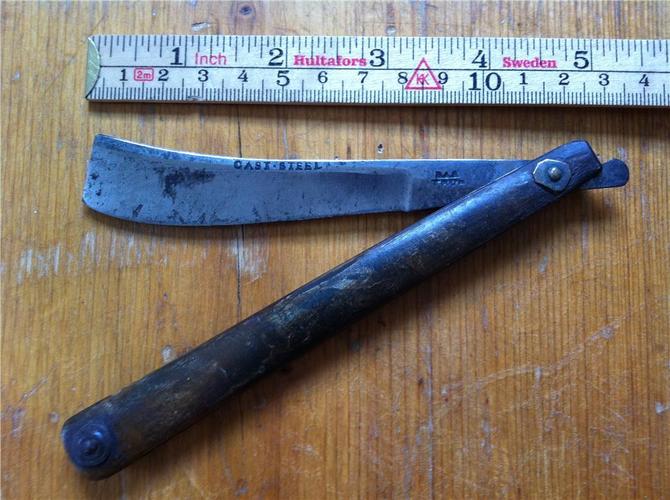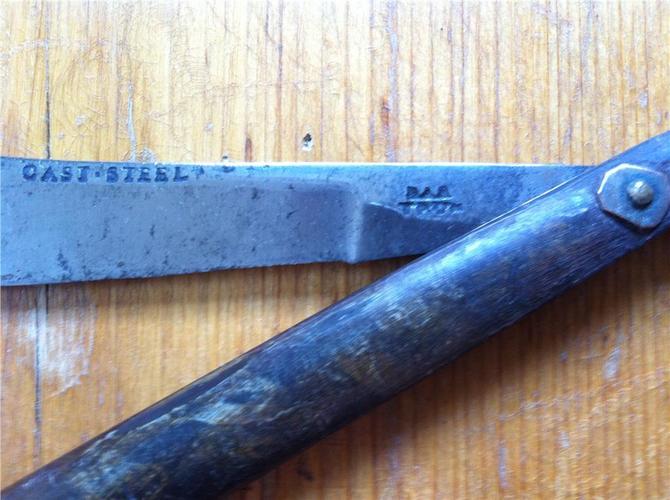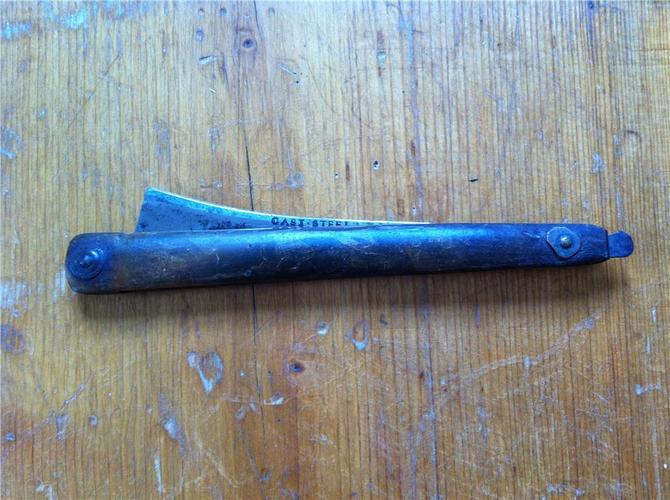Results 181 to 190 of 927
Thread: The Stub-Tailed Shavers
-
04-07-2012, 04:49 PM #181
-
04-08-2012, 03:18 PM #182
-
04-13-2012, 12:05 AM #183The First Cut is the Deepest!


- Join Date
- Feb 2010
- Location
- Upper Middle Slobovia NY
- Posts
- 2,736
Thanked: 480
Unless of course, those are dyed horn (which is what I think they are)

-
04-13-2012, 09:16 AM #184

Magpie,
do you have a photo of a tortoise shell scaled razor?
I just did some reading to find out more if infact my razor is dyed horn or shell.
Check this SRP link :-http://straightrazorpalace.com/razors/46041-tortoise-shell.html
It has a definition of shell by JimmyHAD who quotes a definition from a dictionary, which then seems to be contradicted by Croaker with information about what genuine shell texture should be.
Quoted from the dictionary definition:-
"tortoiseshell, horny, translucent, mottled plates covering the carapace of the tropical hawksbill turtle. The plates, too thin for most purposes in their original form, are usually built up in layers that are molded or compressed after the surfaces have been liquefied by heat; thus, a firm union is effected after resolidification. Inlays can be imbedded in the shell with a hot iron. Tortoiseshell has been used in veneering since ancient times; its chief use today is in the manufacture of toilet articles and decorative objects. It is imitated in products of celluloid and horn, but the laminated structure of most genuine work aids in identifying the real shell."
More reading:-
http://www.google.com/url?sa=t&rct=j...yN4gwWoy8Ld-Zw
eBay Guides - TORTOISESHELL Real or fake How to tell the difference
"Horn as a turtle shell substitute.
Long before legislation was introduced to protect the creatures turtle shell was considered a luxury product. Only the most expensive combs and vanity items were made from it. Therefore cheaper items were made in other, less expensive materials.
One of the first materials to simulate shell was horn. Since horns are derived mainly from various breeds of cattle, the horn working industry was a bi product of the meat industry. Butchers had no use for the horns which were therefore available free or cheaply to the horn workers. Before it could be made into plates suitable for cutting combs the horn required much arduous preparation. In the early 19th century this was done by hand. However by the late Victorian period preparation of horn was largely mechanized in manufactories.
A visually beautiful material in its own right, horn can be subjected to many of the same decorative techniques which are used to adorn turtle shell. Like shell it has natural thermoplastic characteristics which enable it to be shaped and moulded. It can also be stamped, engraved, painted upon and carved into designs of breathtaking lacelike delicacy. However the chief use for which it was employed throughout the 19th century was as a substitute for the much more expensive shell.
One of the processes used to prepare the horn for working was that of clarifying. Having been boiled to remover its natural colouring horn could then be stained in various ways. Adding nitric acid to the boiling water produced sheets of a pale translucent yellowish amber which made it a suitable substitute for the so-called blonde variety of genuine shell. This yellow hue also produced a credible base which could then be subjected to the various painting and staining techniques which simulated the natural mottling of genuine turtle shell.
Picture 6: Horn hair comb simulating tortoiseshell.
Some of these stains were applied with great skill. Without close inspection the material can pass for genuine shell, and even experienced dealers and collectors have been deceived. However, a closer examination will reveal that the mottled effect has been painted upon the surface. It does not go completely through it, as is the case with natural turtle shell.
Picture 6 shows a late 19th century horn hair comb which has been stained and painted in this manner to resemble tortoiseshell. This example has been nicely carved and pierced. However held up to the light the mottled effect does not have the characteristic three dimensional quality of genuine shell. Place this comb side by side with one of real shell and it is not difficult to tell the difference."
As this stage I think I would agree with you that this razor and others that I have are infact dyed horn and not tortoise shell!Last edited by bonitomio; 04-13-2012 at 11:35 AM.
-
04-13-2012, 09:22 AM #185
-
04-13-2012, 01:56 PM #186
-
04-19-2012, 01:48 AM #187The First Cut is the Deepest!


- Join Date
- Feb 2010
- Location
- Upper Middle Slobovia NY
- Posts
- 2,736
Thanked: 480
Just for the informative nature of it, do an online search for early tortoise JEWELRY. Needs to be colonial era, almost all else is horn (and often mis-marked)
The coloration, translucence, and textures are rather different from horn. I myself have never had the pleasure of a true shell razor, but I have held some super fancy necklace/pin combos!
-
The Following User Says Thank You to Magpie For This Useful Post:
bonitomio (04-19-2012)
-
04-19-2012, 04:59 AM #188

I have a new Razor......It is because of the very old form. certainly before 1775
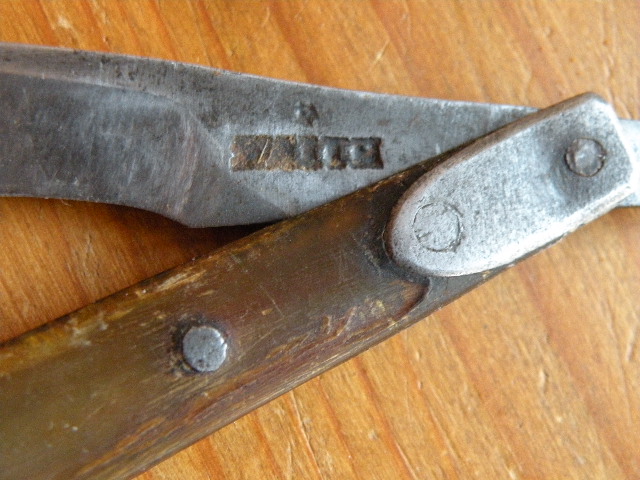
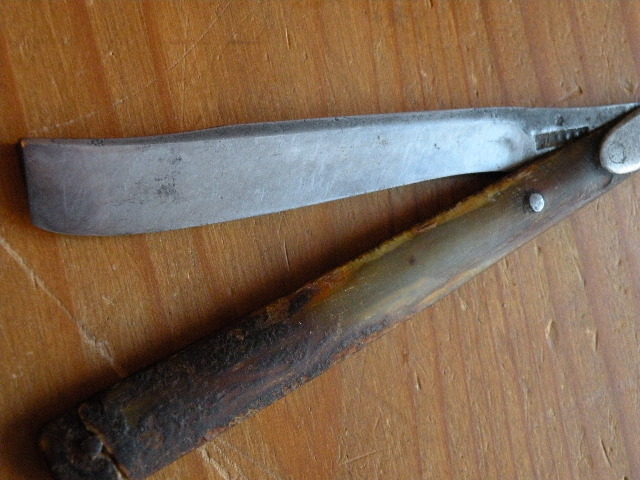
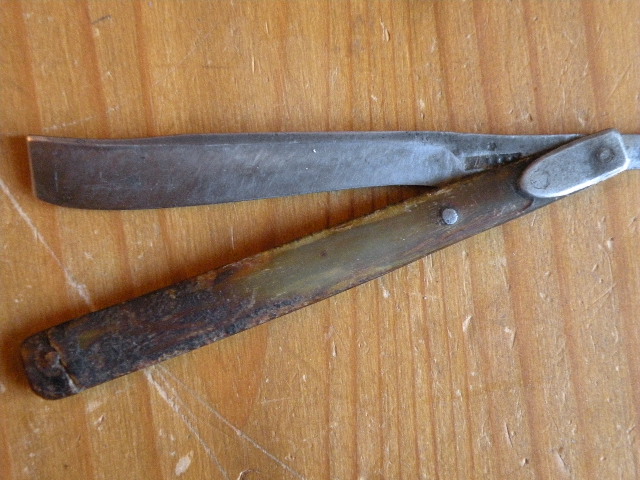
-
04-28-2012, 03:21 PM #189
-
04-28-2012, 11:07 PM #190

Two new ones today.
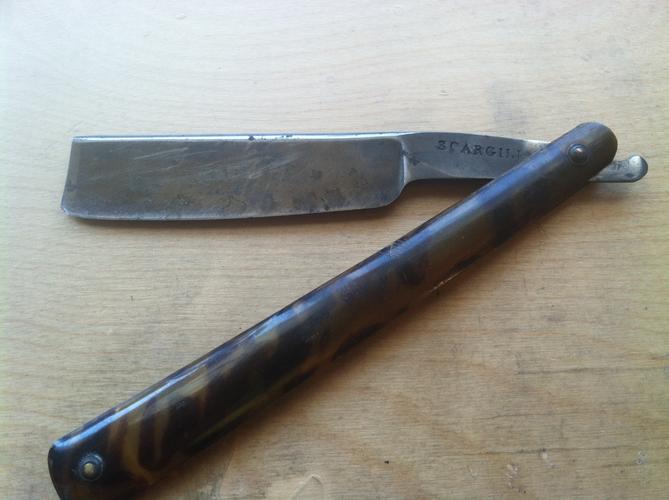
Very early SCARGILL. Probably around 1810. I don't think it's ever been used.
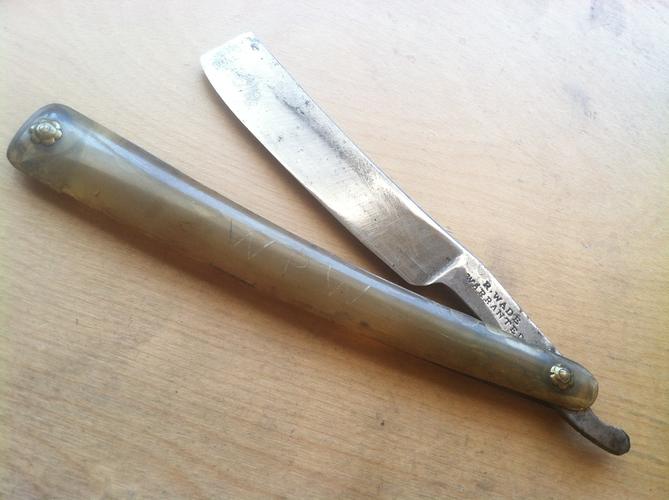
R. WADE / WARRANTED. W P W scratched into the scales, really neat decorative brass collars. Prolly somewhere between 1810-1818.


 2492Likes
2492Likes LinkBack URL
LinkBack URL About LinkBacks
About LinkBacks
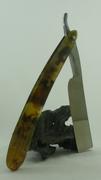







 Reply With Quote
Reply With Quote